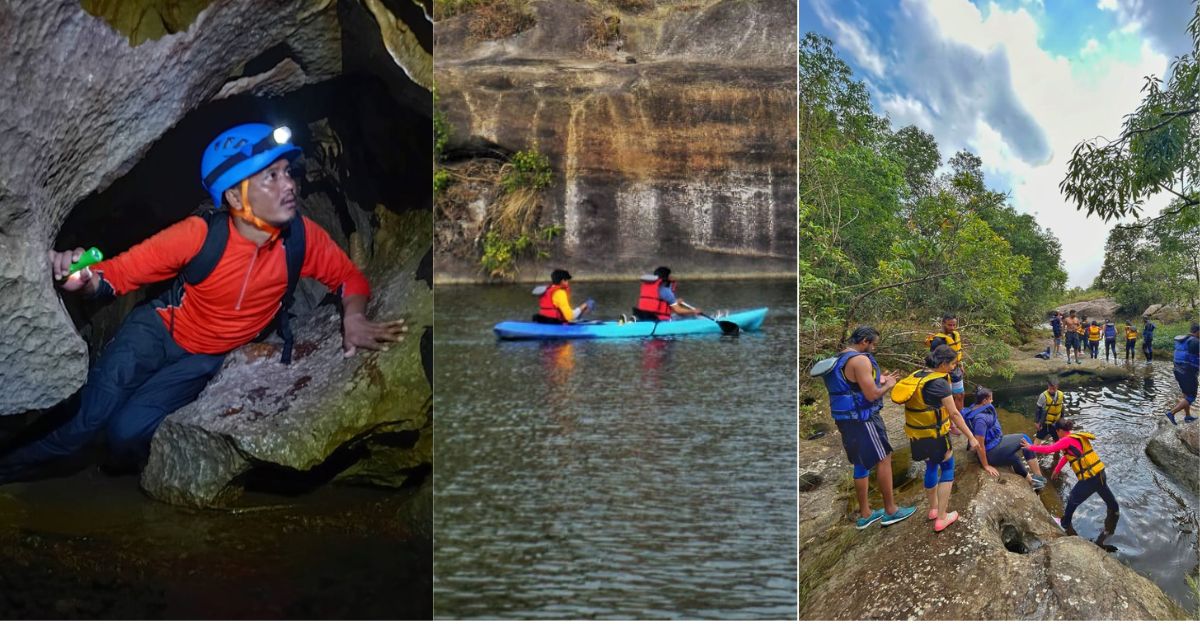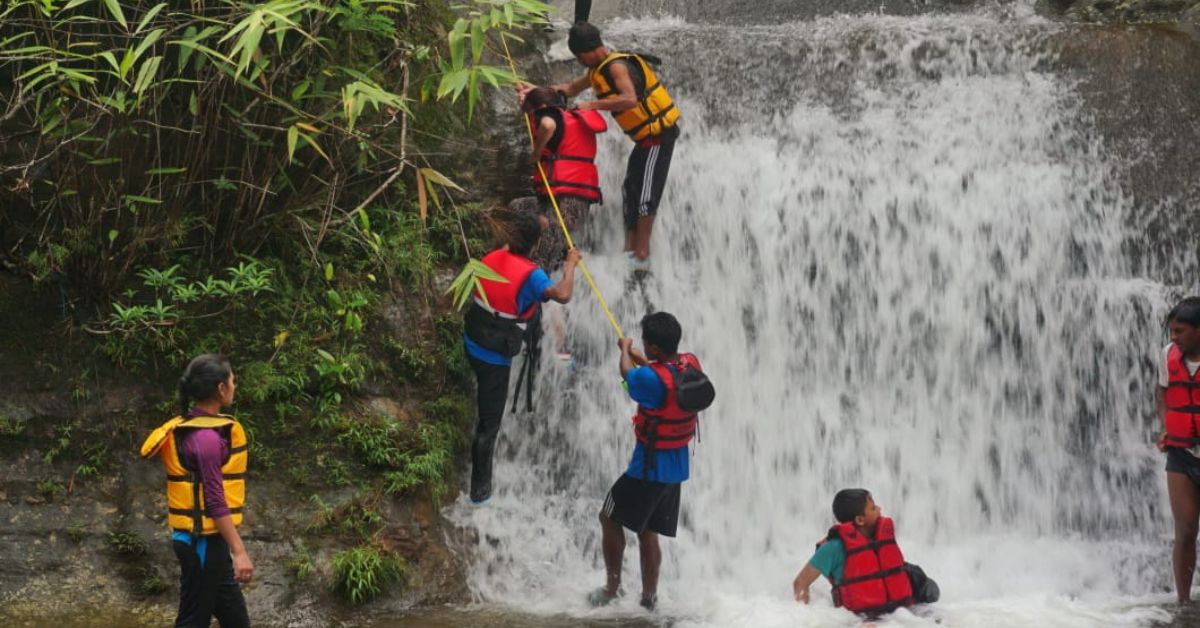Amid dense forests and enchanting landscapes is a small village called Mawlyngbna booming with life. Nestled in the East Khasi Hills of Meghalaya, the region is renowned for its living root bridges, where nature intertwines with human ingenuity. Adventure enthusiasts can partake in trekking, rock climbing, rappelling, exploring the undulating hills and discovering hidden waterfalls like Kyntang.
While the area boasts rich landscapes and beauty, it remained relatively unknown for many years. With limited avenues for income, the youth of the village struggled to survive. Aside from farming, there were few work opportunities.
In an effort to address this issue and boost tourism in the area, Bisharlang Kharnaior initiated Mawlyngbna Traveller’s Nest—a homestay that provides insight into the village’s culture and offers a plethora of activities, including camping, canoeing, and wildlife treks.
“Mawlyngbna is a small village but it is bursting with activities and life. However, for many years, it remained unknown to the world. We want to open it to more people and bring more tourism in the village,” Bisharlang tells The Better India.
‘Our homestay reflects Mawlyngbna’

Born and raised in Mawlyngbna, Bisharlang, affectionately called Bishar, grew up in his serene village, cherishing the simplicity of life.
As he navigated the complexities of adulthood, he found contentment in his days as a beekeeper.
“I was satisfied with whatever my family and I were earning, but I could see that there were numerous untapped opportunities for the youth. Besides farming, there were almost no other work options,” he reflects.
Observing the youth departing from the village, Bishar felt an urgent need to take action. “My sentiments were shared by many in the village, and we came together to find a solution,” he recalls.
With collective efforts from the villagers, the Mawlyngbna Multipurpose Co-operative Society Ltd was established. “Despite our breathtaking landscape, our existence was relatively unknown to the wider world. The youth faced the dilemma of either leaving the village or struggling for survival. The cooperative society aimed to create new avenues for income generation,” he explains.
“When we were brainstorming, the first thought that struck us was to promote tourism in the village. Increased tourism not only benefits the village directly but also contributes to the growth of local businesses,” he opines.
“One of my friends from Shilling who was in the tourism industry was the one who gave us the courage to take the leap. He helped us with setting up the property,” he informs.
Under the society’s umbrella, Bisharlang initiated Mawlyngbna Traveller’s Nest, a unique combination of a homestay and camping site for tourists.
“There is so much to see and explore in the area but most people flock to the mainstream hills station. We wanted to do something that attracts tourists and this is how the idea of an adventure camp came up,” he says.
“Under the society, we are 240 members who work in bringing new job avenues for people. Through the homestay and camp alone, we have trained 40 people in different tasks like hospitality, housekeeping and trek guiding and given them jobs at the homestay,” he says.
Adventure, nature and culture
Talking about the initial response of the tourists, Bishar says, “We started back in 2014, while it was a good dream, the initial response was not how we expected,” he says.

While there were a lot of exciting things that the place had to offer, a lack of awareness prevailed. “It was via Facebook and Google search that a few people started to visit us. With word of mouth, we started getting more and more visitors,” he says.
“We have hosted nearly 300 people this year alone. The popularity has increased and we get a lot of inquiries,” he adds.
Talking about the various activities that the homestay offers, he says, “We have a few activities at our homestays. We have divided them according to the season — monsoons and winters. Most of them are related to water sports like Cliff Jumping, River Canyoning, Kayaking, etc. We also organise treks to explore the nearby areas,” he says.
There are two types of treks — short and long treks. “A long trek is around four hours and a short trek is about 2 hours long. On those treks, you can enjoy the landscapes, enjoy bathing in 4 waterfalls, you can see the fossils and the magnificent rock formations,” he says.
The homestay also arranges cave exploration for the guests on request. “We have trained nearly 40 locals as trek guides to help people in these treks,” he informs.
Besides exploring the wilderness, the homestay also organises village tours and cultural activities like eating authentic food. “We also want to introduce people to our culture and heritage. We serve authentic Mawlyngbna food to the people at our homestay during their stay,” he informs.
The property currently comprises two cottages and a campsite, providing accommodations for the guests. Bishar emphasises, “We are committed to giving back to nature as it is the very essence of our livelihood. We strive to be environmentally responsible by ensuring that all our treks are plastic-free. Additionally, we utilise bamboo for crafting storage spaces for our guests.”
Reflecting on his journey thus far, Bishar expresses, “I believe we possess immense potential for growth, and it is truly exciting to witness the steady growth of tourism in the village year by year. We are optimistic that one day the village will offer an abundance of opportunities, eliminating the need for anyone to migrate to the city in search of employment.”
(Edited by Padmashree Pande)
No comments:
Post a Comment